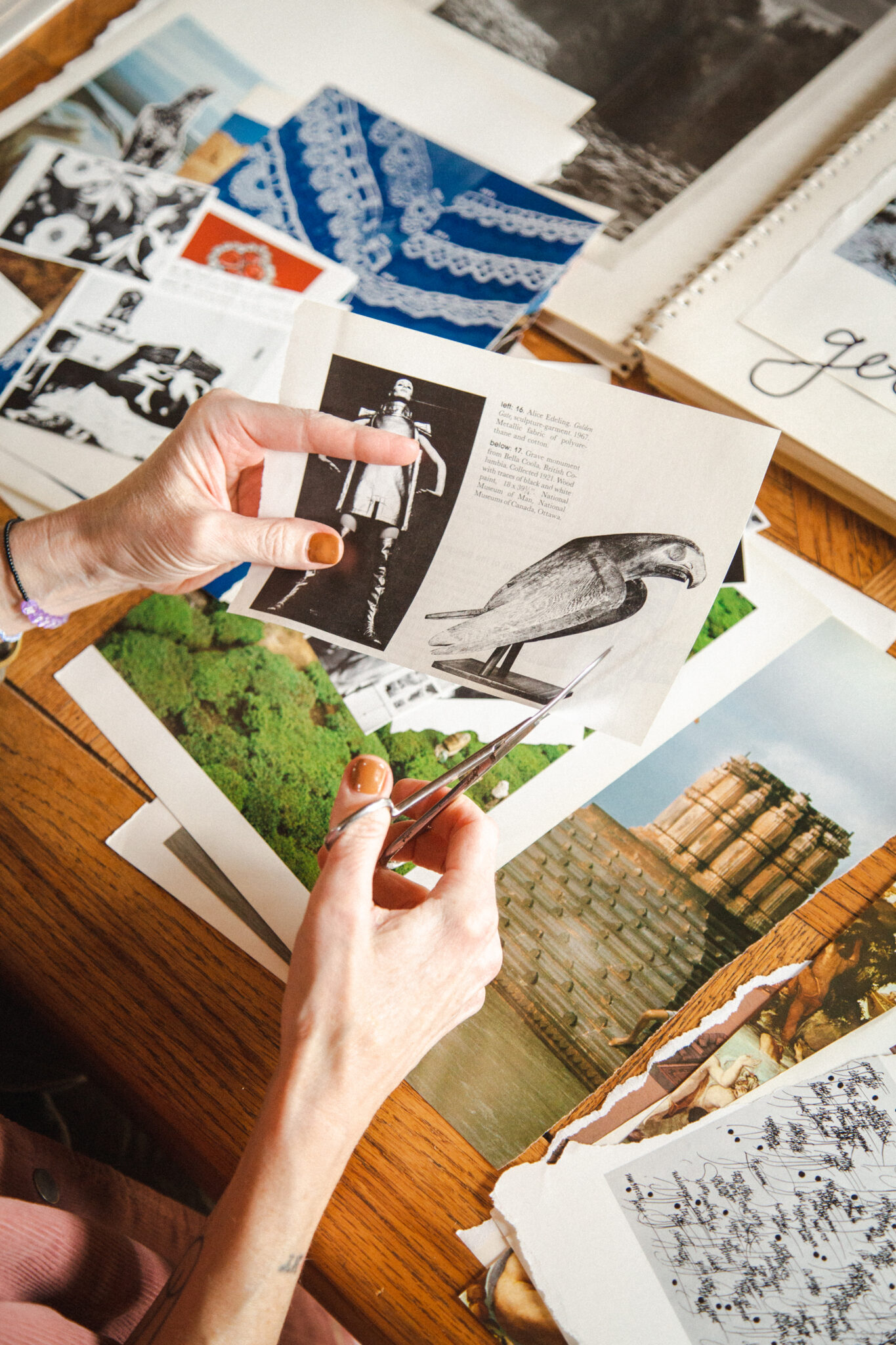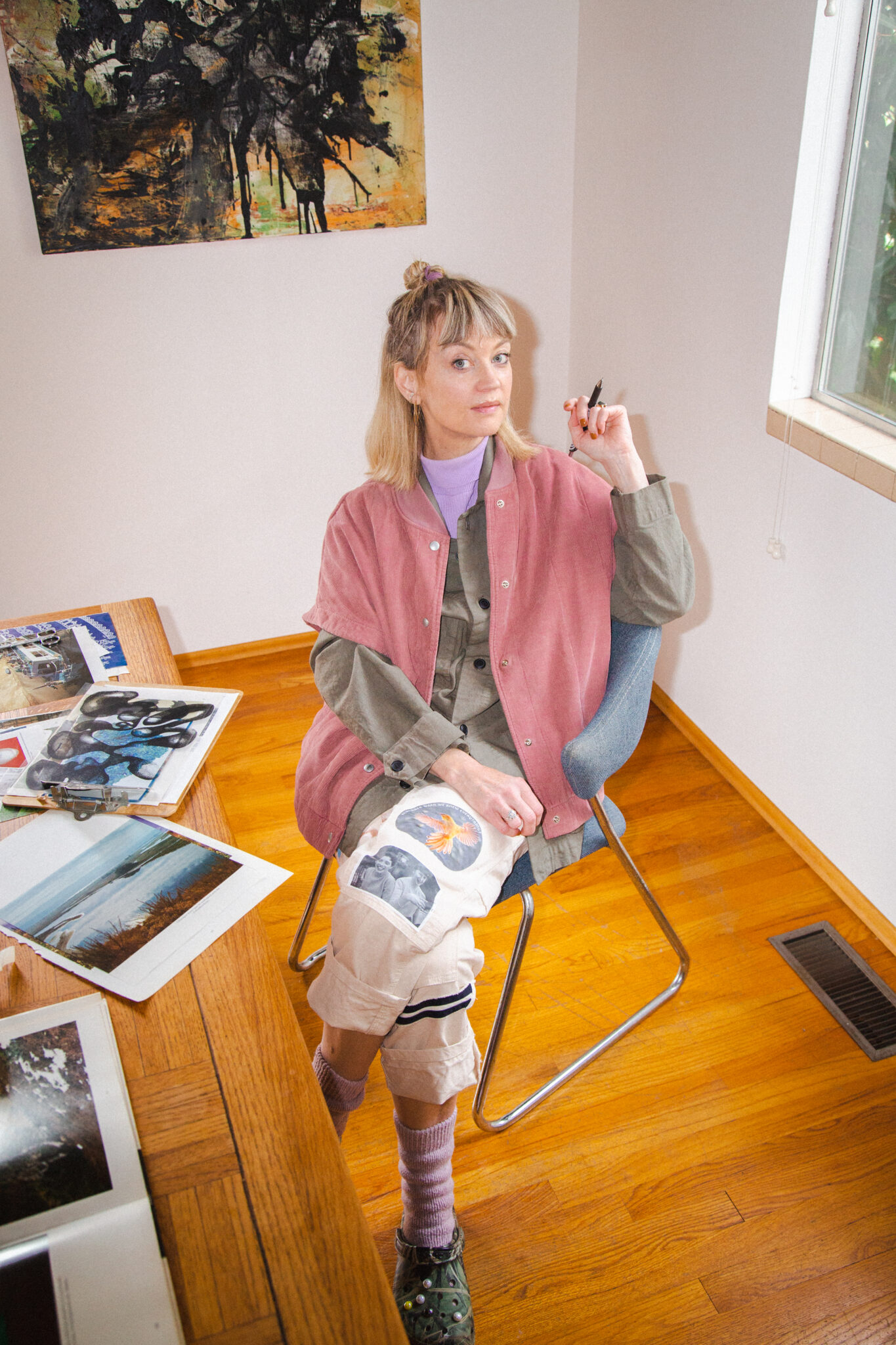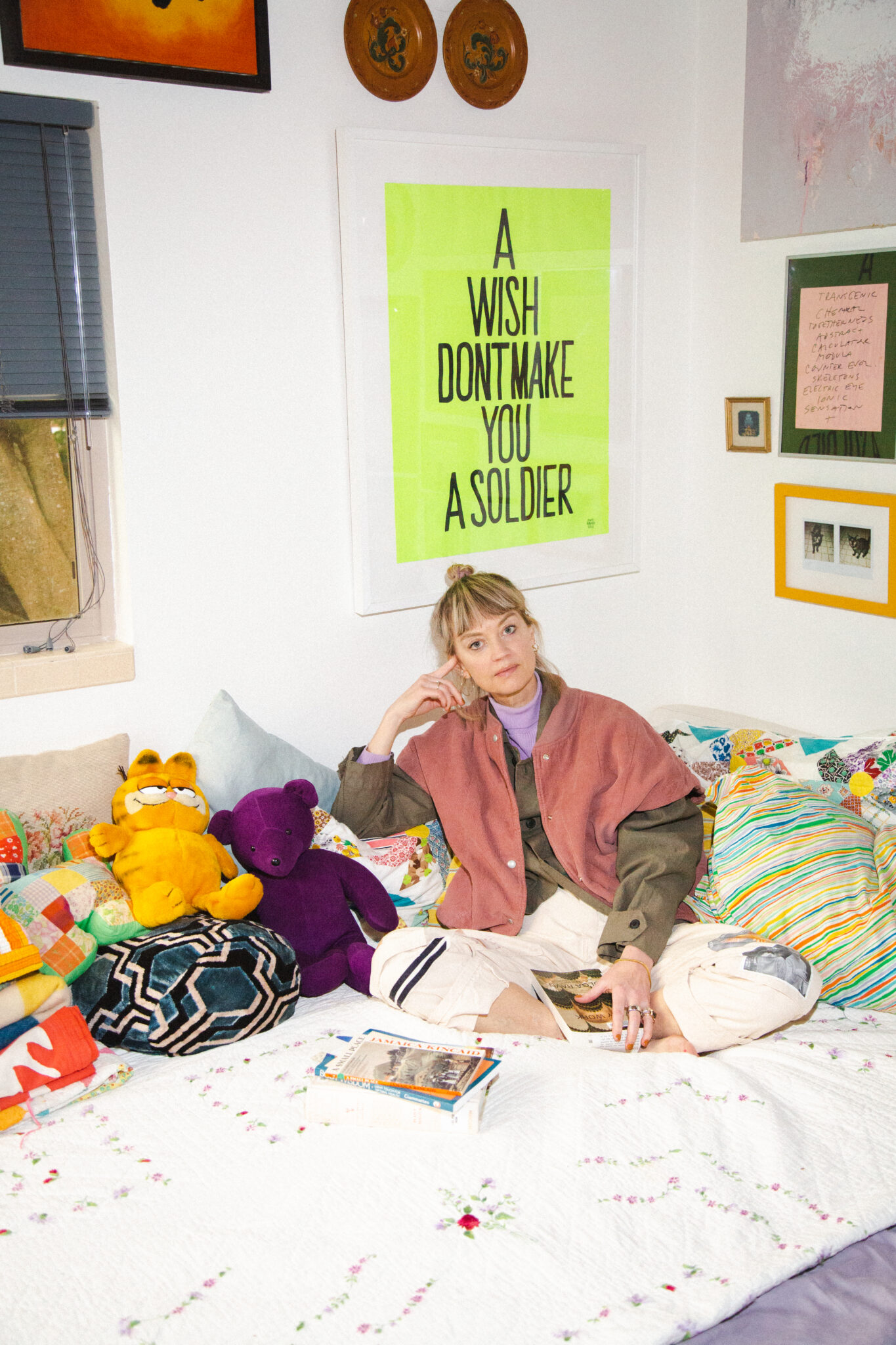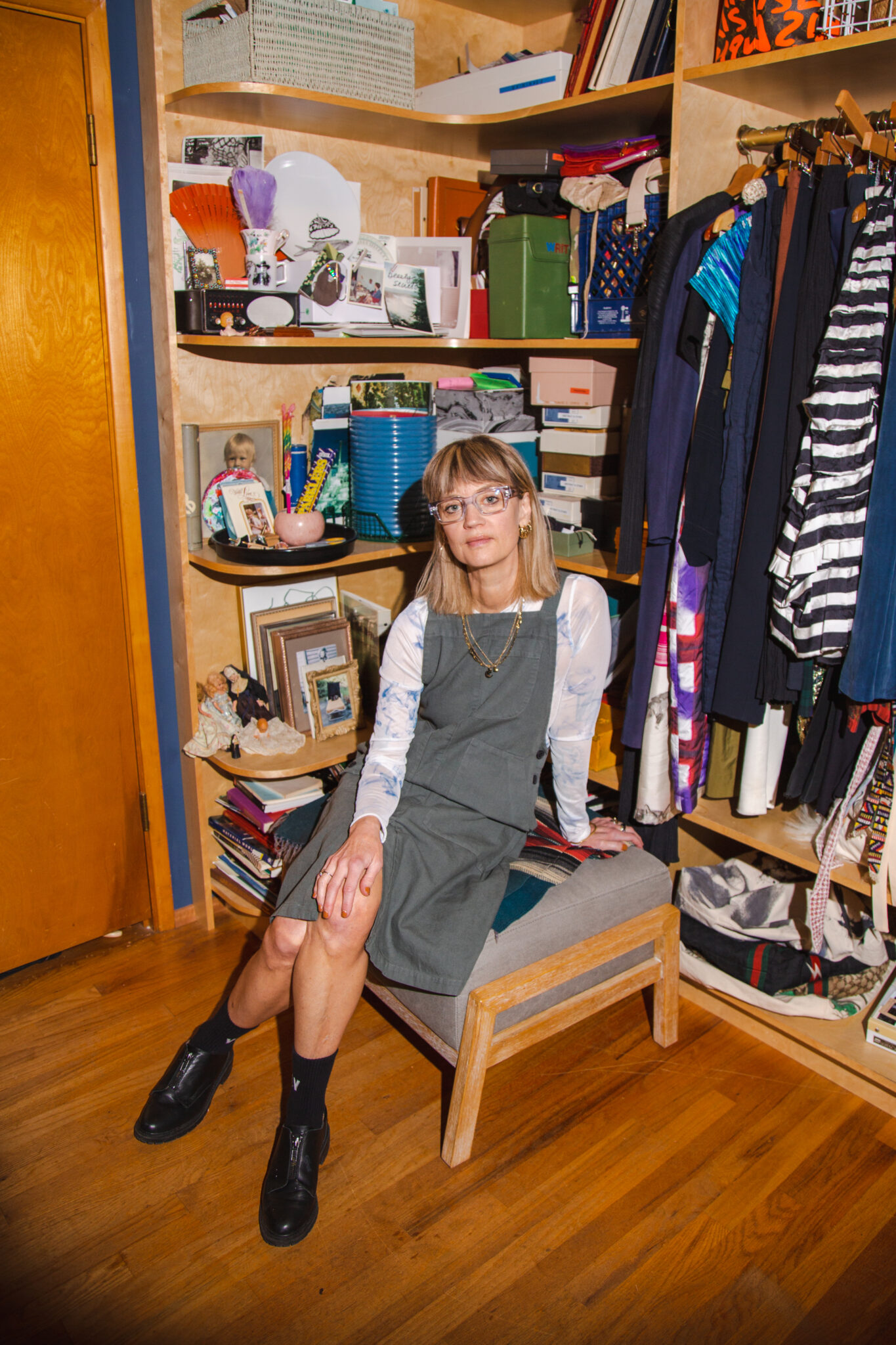
The Womxn We Love series highlights womxn in the Pacific Northwest that inspire us and whose work we admire.
INTERVIEW BY LILIA Ramirez
3/13/2024
Who is Laura Cassidy?
I’m a Gen X, Enneagram #2, Pisces Sun. I’m a writer, editor, and artist who is also a creative consultant and grief coach, who also works part-time in an advisory role doing outreach and community work at Recompose, the pioneers of human composting and urban environmental deathcare.
Lately I’ve also been thinking of myself as an aspiring elder. I resisted it for a while but now I’m embracing it and learning to love the contradictions and possibilities. I hope to become more tender and more vulnerable even as I continue growing my capacity to support others.
“As a person who used to work in fashion and now works in funerals and juggles a pretty wild variety of projects and tasks in any given week, it’s been harder and harder to get my “What do you do?” answer into a good sound bite. I really appreciate that you didn’t ask that——that you went much broader and allowed a rangier response. I often encourage people to indulge in the unruliness of their self-identity. We put too much pressure on ourselves to be one easily encapsulated thing.”
Who influences you and how?
My former and my future selves: Wanting to do right by both of them. Wanting to create softness and ease and purpose and meaning for all of us.
And my friends——all those beautiful people who love the world enough to fight for love and art and beauty and connection. But I am also and maybe especially influenced by my friends who are like, under 10 years old. They’re the most present. The most in the moment. The most in awe of the world. The most accepting. The best at pretending. The best at being curious. The most stylistically adventurous. The closest, at any given moment, to laughter and tears.
My partner, too. He influences me to rest. To explore my visual language. To use my voice. To work on songs and music with him. To trust myself.
You are a creative consultant + coach, writer/editor, artist, death care worker…Tell us how these different ideas intersect in your life.
I’ve always been drawn to people’s stories, and I love to ask big questions—and help people find the answers. Ultimately I am driven to help people understand (as best any of us can) why we’re here and what all of this (gestures wildly) is about.
“The foundation of the work I do is 20 years spent in journalism and content strategy. I love to spot the story, to frame the story, to find a new and maybe off-beat way of telling the story. To help others relate to the story, to help others see themselves in the story, to empower anyone who is called toward the experience to shape and share their own story. I think I just naturally thread all of that into whatever role I’m in.”
Is there a particular role you play in the work you do, that pulls you more to who you are or feels most fulfilling?
I love asking questions. I am a born interviewer. An impassioned intake-taker. One of my favorite feelings in the world is asking a question, waiting out the pause, and hearing the person say something like, “Damn, that’s a hard question!!” But like, good hard. I’ve been doing these artist interview videos with On the Boards for two seasons now and I just love that project. We get lots of those good-hard moments.
But I also really love dreaming up and programming experiences, too. “Activations,” they might be called in marketing; “parties,” “art shows,” or “happenings,” they might be called everywhere else. Little (or big) three-ring circuses aimed at underscoring a theme or showcasing a person and their work or exploring and workshopping together in community. “I’m driven by the idea of creating meaningful but maybe slightly weird experiences that bounce around inside a person’s brain, encouraging greater comfort with unfixed outcomes that are not prescribed or consistent.”




Tell us about Outreach + Community work at Recompose.
I absolutely love it. Back in 2011, Katrina Spade began pioneering this incredibly natural and, in some ways, very simple but also totally revolutionary alternative to burial and cremation. Since 2020 she and a team of incredible humans have been giving families and communities a way to put their loved one’s earthly body into the eternal life-death-rebirth cycle that is happening everywhere in nature. My job is to tell people about it, and to help them understand how and why it’s so vital for the world, and maybe also for themselves and their families.
What inspired you to do your current work: grief and end of life care?
I lost my very dear and favorite aunt and uncle in quick succession and shortly after that, my dad too. I had had much more traumatic and dramatic deaths in my life before that, but their deaths hit me so hard and for about a year afterward I couldn’t be in a room of people——I couldn’t go to the grocery store——without thinking, “Who here has lost their mother? A best friend? Who knows what that feels like? Who has no idea?” And I just keep following that, sort of anthropologically.
“A lot of people, when someone in their life dies, they very quickly begin to look for other people who know the experience. They read all the memoirs and poems, watch all the movies, listen to all the songs. We survive and heal via community——via stories.”
How do you deal with your own emotions and empathy when working with your clients?
I think the process of gathering and witnessing and staying close and giving care … I think all of those things that are required are also the balm. Which is not to say that people who caretake and support don’t need to proactively seek support and care in return. I absolutely need somatic work, acupuncture from my beloved acupuncturist, long walks to stand by the creek near my house, and friends who actively drop in and love me. I need my own art and expression projects, and I need art and expression in collaboration with others. I absolutely need to care for my nervous system——that’s been a good, hard, crystal clear lesson of late. But I’m truly one of those people (Enneagram #2, Piscean) who gets fed by connecting with others. I like that about myself.
What is Griever’s Ball and how is the content presented in your Substack publications?
I’m a zine person, a magazine person, a print person——but I was also in the thick of the turn towards blogs and social media in the mid-00s. After I started doing grief coaching, I naturally wanted to build a publication to help people navigating grief, and I wanted to be able to do it in a visual, conversational way. I wanted it to look + feel not unlike the publications I have been a part of within music, food, fashion, and culture. In short, “I wanted to make a “cool” publication about grief. As writers sometimes we need to write the story we need to read. Griever’s Ball is like that.”


Tell us about your early work in relation with Fashion?
Anyone remember how cute Seattle was in like 2010? We had our little scene, our little independent designer runway shows. People cared about things local makers were making. I was the style editor at Seattle Met in those years——those were good years for print——and I’m really proud of what we did, helping to support and create a rad scene of local talent. But I did get a little hungry eventually, and I wanted to see what I could do outside the local framework. When I moved to Nordstrom, I had the opportunity to go to Fashion Week twice a year around the world and create multimedia stories about the big, of-the-moment designer brands as well as the emerging brands that Olivia Kim was bringing in during that era.
“I continue to work with small brands and designers and makers from time to time and that will probably always be one of my favorite subjects. Again, it ties back to that storytelling thing; helping them with creative and brand direction to shape their message both visually and with language.”
From your earlier work as style editor for Seattle Met & creating editorial content in the fashion world for so long, what are the ideas or values embedded in the garments you select for your wardrobe nowadays?
Well, these days I only, only, only buy new items from small companies. (Okay except for shoes; it’s so much harder with shoes). I don’t buy much new at all anymore, but when I do, it’s going to be from a small company where the sewers and designers and everyone along the pathway is respected and valued. I was never a wild consumer but I certainly indulged in designer quite a bit—even though I was carefully tracking each piece to the sale rack. That helped my bottom line but not the huge glut of waste, human suffering, and manufactured need and bad feelings that is created by the fashion industry. I don’t want that stuff at all anymore, though of course I am holding on to some of my favorite key pieces from the last twenty years, and planning to wear them for another twenty years.
Other than that, I have and always will shop vintage and second-hand. My very earliest memories of dressing were motivated by loving the cultural study of movements and moments, and, really, really loving creating my own spins on all of it.
You recently directed a show called “Mourning Clothes” in the Fashion District for Bumbershoot 50th year Anniversary (last September), could you share your vision behind it and your experience combining these two: fashion + grief?
The visual art directors for Bumbershoot were all new last summer, giving that 50 year tradition a huge injection of new perspective. And one thing they did was expand what ‘art’ meant——which included seeing fashion as art. One of the visual art directors came to me with a big carte blanche kind of invitation to do a fashion project, but I had to explain that my heart just wasn’t really in “Fashion” anymore. To his credit, he dared me to combine fashion with my heart, and that’s how Mourning Clothes came to me.
“Clothes are self-expression, and mourning and grief can be hard to express. I asked a dozen local creatives to imagine a wardrobe or uniform or collection to express mourning. We made a walking, talking three ring circus out of it and I heard from a few people (via IG and similar) that I managed to hit that note I described earlier——that thing where folks who encountered Mourning Clothes woke up the next day going, “What even was that??” … but in a good way.”


Will we be seeing more exhibitions of Visual & Audio projects or Film in the future? What ideas would you like to explore?
I hope so. I think so, for sure. I’m also always going to fall back on print projects, too, and those experiences and activation I mentioned. Who’s got a space and/or a community and/or a need or some programming space to fill——and who wants to do some vulnerable but fun stuff where we come together to talk about our feelings and make things together and listen to people read from their novels-in-progress while watching someone in a great outfit bang on a broken piano?
LAURA SULLIVAN CASSIDY
creative consultant + coach
writer/editor/artist
grief + death care worker
softdata.life
@laurasoftdata
grieversball.substack.com
laurasullivancassidy.com




